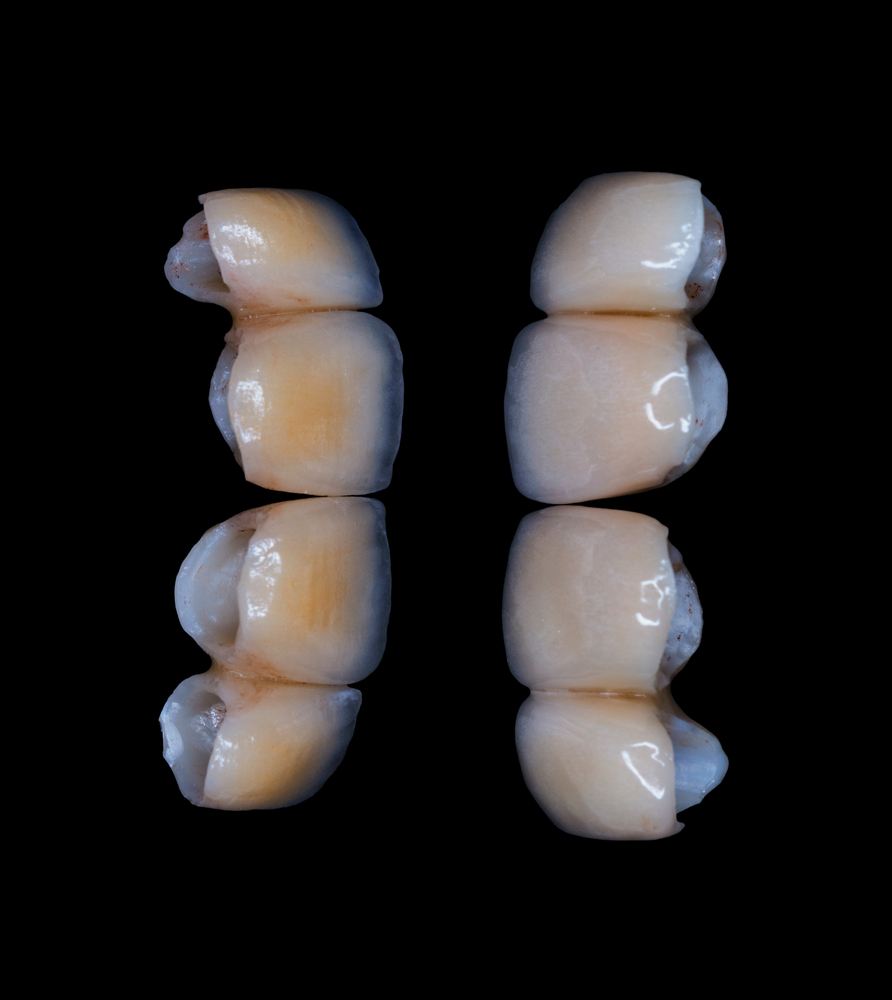Dental Crown vs Veneer
Dental crowns and veneers are two popular options, When it comes to improving the appearance and functionality of your teeth. Both offer aesthetic and restorative benefits, but they differ in terms of application, materials, and specific use cases. If you’re considering cosmetic or restorative dental treatment, understanding the differences between dental crowns and veneers can help you make an informed decision.
What Is a Dental Crown?
A dental crown is a cap that covers the entire tooth, restoring its shape, size, strength, and appearance. Crowns are typically used for teeth that are damaged, decayed, or weakened due to large fillings, root canals, or fractures. They can be made from various materials, including porcelain, ceramic, metal, and resin.
Key Features of Dental Crowns:
- Coverage: Crowns cover the entire visible portion of the tooth.
- Material Options: Available in porcelain-fused-to-metal, all-ceramic, resin, and metal.
- Durability: Known for their strength and longevity, often lasting 10-15 years or more with proper care.
- Purpose: Primarily used for restorative purposes, although they also offer aesthetic enhancements.
What Is a Veneer?
A veneer is a thin layer of porcelain or composite resin that is bonded to the front surface of a tooth. Veneers are primarily used for cosmetic purposes, correcting issues such as discoloration, minor misalignment, and chipped or worn teeth. Unlike crowns, veneers only cover the front side of the tooth, preserving most of the natural structure.
Key Features of Veneers:
- Coverage: Only the front surface of the tooth.
- Material Options: Primarily made from porcelain or composite resin.
- Durability: While not as strong as crowns, veneers can still last 7-15 years with good care.
- Purpose: Used for cosmetic enhancements to improve the appearance of teeth.
Dental Crown vs. Veneer: Key Differences
Understanding the main differences between crowns and veneers is crucial for making an informed choice:
1. Coverage and Protection
- Crown: Covers the entire tooth, providing full protection and structural support. It is ideal for teeth that are severely damaged or decayed.
- Veneer: Only covers the front part of the tooth, making it better suited for cosmetic issues rather than restorative purposes.
2. Preparation of the Tooth
- Crown: Requires significant removal of the tooth structure to fit the crown over the tooth. This process ensures that the crown can be securely attached.
- Veneer: Requires minimal tooth preparation, as only a thin layer of enamel needs to be removed. This preserves more of the natural tooth.
3. Material and Aesthetic
- Crown: Can be made of various materials, including porcelain, zirconia, metal, or a combination (porcelain-fused-to-metal). This versatility means that crowns can be matched to the natural color of your teeth while offering durability.
- Veneer: Typically made from porcelain or composite resin. Porcelain veneers are popular for their realistic appearance and stain resistance, while resin veneers are more affordable and quicker to apply.
4. Strength and Durability
- Crown: Generally more robust than veneers and can withstand greater pressure, making them suitable for molars and teeth that need to bear heavy loads.
- Veneer: While strong, they are not as durable as crowns. They are best suited for front teeth where the primary goal is aesthetic enhancement rather than heavy-duty functionality.
5. Cost
- Crown: Usually more expensive than veneers due to the greater amount of material and preparation required. The cost can vary based on the material used and the complexity of the procedure.
- Veneer: Typically less expensive than crowns, but the price varies depending on the type of veneer (porcelain being more costly than composite resin).
When to Choose a Dental Crown
Dental crowns are ideal for:
- Severely Damaged Teeth: Teeth that are cracked, broken, or extensively decayed.
- Post-Root Canal: Teeth that have undergone root canal treatment often need crowns for added protection.
- Large Fillings: When a tooth has a large filling that compromises its strength, a crown can offer necessary reinforcement.
- Restoring Function: Crowns help restore chewing and biting functions, making them suitable for molars and premolars.
When to Choose a Veneer
Veneers are ideal for:
- Cosmetic Enhancements: Individuals looking to improve the appearance of their smile by addressing minor imperfections like discoloration, slight misalignment, or small chips.
- Preserving Tooth Structure: If you prefer a less invasive procedure that retains more of the natural tooth, veneers are a better choice.
- Uniformity and Aesthetics: Veneers can create a consistent, aesthetically pleasing smile, often used in smile makeovers.
Pros and Cons of Crowns and Veneers
Dental Crowns: Pros
- Strength and Durability: Lasts for many years and provides excellent protection for weakened teeth.
- Versatile Material Choices: Options for metal, ceramic, or a combination for durability and aesthetics.
- Full Coverage: Protects the entire tooth, making it ideal for restorative purposes.
Cons:
- Invasive Procedure: Requires more tooth structure removal compared to veneers.
- Higher Cost: Can be more expensive due to the material and labor involved.
Veneers: Pros
- Minimally Invasive: Less tooth structure needs to be removed.
- Natural Appearance: Porcelain veneers mimic the translucence and shine of real teeth.
- Quick Transformation: Ideal for cosmetic improvements.
Cons:
- Less Durable: Can chip or crack under high pressure and are not ideal for teeth under significant stress.
- Limited Protection: Does not provide full coverage or support like crowns.
Maintenance and Lifespan
Both crowns and veneers require good oral hygiene to last their full lifespan. Proper brushing, flossing, and regular dental check-ups are essential for maintaining their appearance and functionality.
Dental Crowns: With good care, crowns can last 10-15 years or longer. Ceramic and porcelain crowns may need to be replaced sooner if they chip or crack, while metal crowns often last longer.
Veneers: Porcelain veneers typically last 7-15 years with proper care, while composite veneers may need to be replaced more frequently (5-7 years). Avoiding hard or sticky foods and using a night guard if you grind your teeth can help extend their life.
Westwood Gardens Dental Clinic: One of the best dental clinics in Richmond Hill, Ontario
For those in Richmond Hill, Ontario, Westwood Gardens Dental Clinic is a trusted provider of high-quality dental care, including partial dentures. Call them today at 647-905-7303 or email info@westwoodgardens-dental.ca to schedule a consultation. You can also visit their clinic at Unit 18, 8868 Yonge St, Richmond Hill, ON, L4C 1Z8 for a comprehensive assessment and personalized treatment plan.
Final Thoughts: Which Is Right for You?
Deciding between a dental crown and a veneer depends on your specific dental needs and goals:
- Choose a crown if you need full coverage for a damaged tooth, post-root canal protection, or significant restoration.
- Choose a veneer if you are looking to make cosmetic improvements with minimal alteration to your natural teeth.
Consult with your dentist to assess the condition of your teeth, discuss your desired outcome, and determine the most suitable option for your situation. Whether you choose a crown or a veneer, both options offer solutions to enhance your smile and improve oral health.




